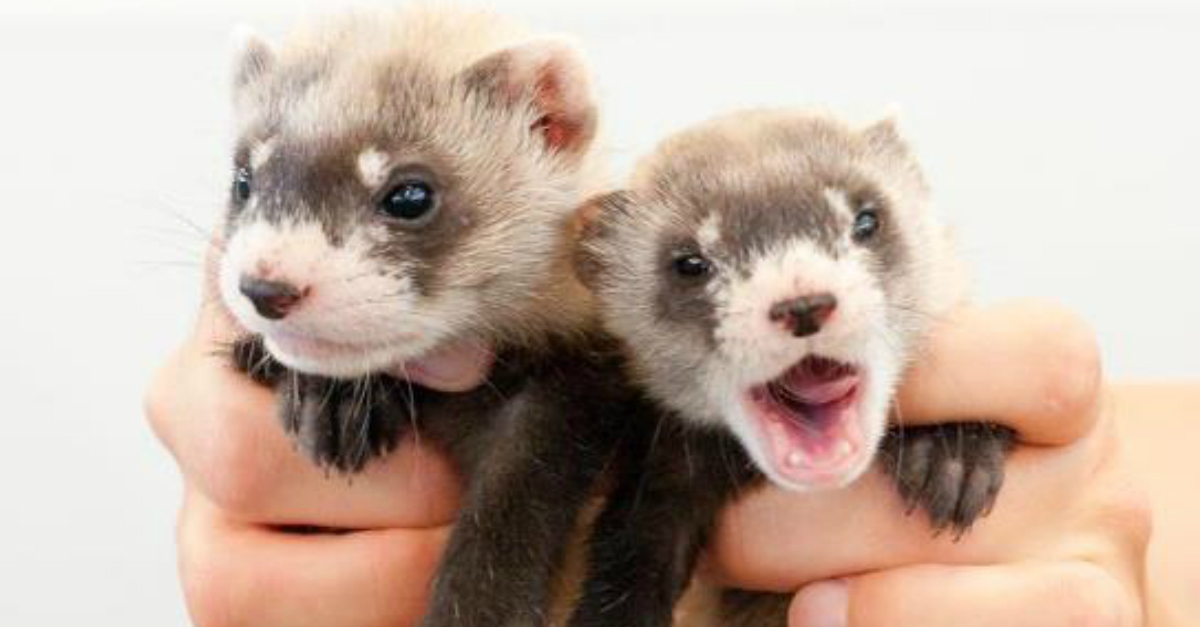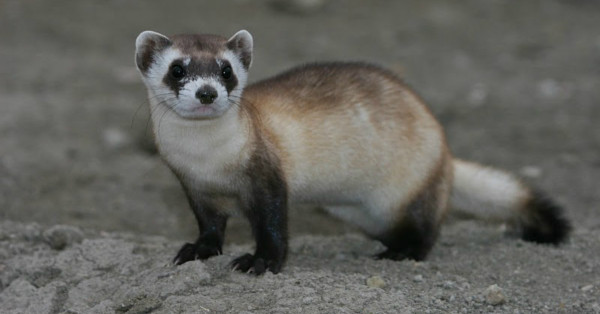
Cryobanks For Ferrets!? The Endangered Ferret Fertility Program That’s Breaking All The Rules
When the black-footed ferret was declared extinct in the wild in 1987, many conservationists believed it foretold the end of these fuzzy, playful creatures. However, recent scientific efforts have brought the species back from the brink of extinction. Using cryopreserved ferret sperm, biologists have artificially inseminated female ferrets that failed to reproduce in captivity, increasing the numbers and genetic diversity of the recovering ferret population.
Black-footed ferrets once lived throughout the Great Plains, but when prairie dog eradication programs killed off most of their prey, the ferrets quickly died out. In the 1980s, after the population had been reduced to only a few dozen animals, scientists collected all the remaining black-footed ferrets to try and breed them in captivity in an attempt to save the species. Forward-thinking researchers also decided to freeze the male ferrets’ sperm for future use.

Before they turned to cryobanked sperm, scientists originally used fresh sperm from live males to inseminate the females. In 2008, the researchers made the first successful attempts with cryopreserved sperm that had been frozen approximately 10 years. The most recent efforts involved sperm that had been collected from a ferret nicknamed “Scarface” and frozen for 20 years. His offspring were among eight kits born nearly two decades after his death.
By all measures, the program has been a rousing success so far. After reaching a low of just 18 individual ferrets, the black-footed ferret population has rebounded to a captive breeding population of about 300 and a reintroduced population in the wild of about 500 ferrets. The captive breeding program helps ensure the genetic diversity of the species so that ferrets don’t become inbred and develop health problems. Because there are so few ferrets, it is problematic when a ferret doesn’t breed and fails to pass on its unique genetics. A robust gene pool keeps the entire population healthier, so scientists artificially induce breeding when the ferrets fail to breed on their own.
Before artificially inseminating a particular female ferret, the scientists perform a genetic analysis on the available population to pick the best possible match for the available sperm. This is especially important because the original population was so small that inadvertent inbreeding can be a problem. After insemination, the pregnant ferrets are monitored in their nest boxes via closed-circuit cameras and weighed regularly by their caretakers.
Because these conservation efforts involve both intensive technology and animal husbandry, a few different organizations collaborate on the ferret project. The USFWS National Black-Footed Ferret Conservation Center, the Smithsonian Conservation Biology Institute, Toronto Zoo, Louisville Zoological Garden, Cheyenne Mountain Zoo, Phoenix Zoo and the Lincoln Park Zoo are some of the parties involved, and the entire black-footed ferret recovery program is overseen by the U.S. Fish and Wildlife Service.
In addition to helping ferret populations recover sufficiently to repopulate their natural habitats, cryobanked sperm and artificial insemination also help advance the science of conservation. In August 2015, researchers published the results of their ferret sperm cryobanking efforts in the journal Animal Conservation and encouraged the use of these techniques for conservation efforts involving other species. These recent efforts were the first time that frozen sperm and artificial insemination have been used in a formal species recovery program, showing that they are viable tools to help endangered species.
From a decimated population to a thriving recovery program, the story of black-footed ferrets and their cryopreserved sperm demonstrates that science has made the comeback of endangered species an attainable goal. Check out The Animal Rescue Site to learn more about animal rescue programs and explore how technological advances are opening up new possibilities to save animals.
Help Rescue Animals
Provide food and vital supplies to shelter pets at The Animal Rescue Site for free! →